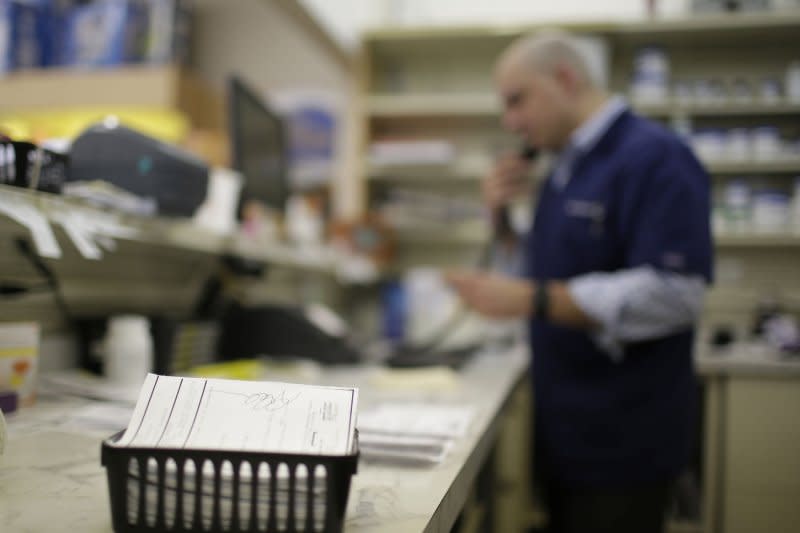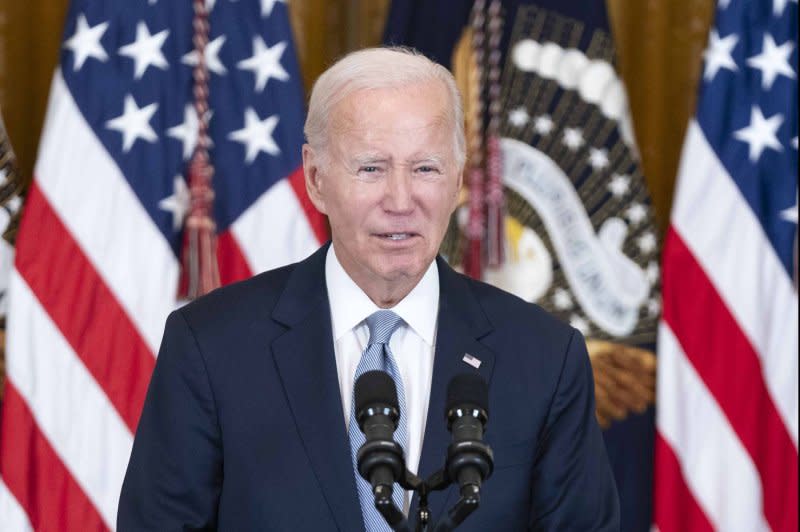10 U.S. drugmakers agree to participate in price negotiations with Medicare

- Oops!Something went wrong.Please try again later.
Oct. 3 (UPI) -- Ten U.S. drug manufacturers have agreed to participate in the initial round of the first-ever pricing negotiations between Medicare and the nation's pharmaceutical giants, the Biden administration announced Tuesday.
The highly anticipated Medicare Drug Price Negotiation Program was set to enter its next phase after the Centers for Medicare & Medicaid Services invited the drugmakers to voluntarily join the program in August.
The move comes as President Joe Biden seeks to fulfill a campaign promise to make prescription medicines more affordable for millions of aging Americans.
The drugs on the list are among the most commonly used to treat everything from heart failure, blood clots, diabetes, arthritis, and Crohn's disease, however, average Americans often cannot afford to buy the drugs, Biden said in August when the drug cost reform effort kicked off.
Previously, the White House said the drugs are among the top 50 prescription medications that seniors fill the most at retail pharmacies under Medicare Part D.

The companies electing to participate include Bristol Myers Squibb, Boehringer Ingelheim, Janssen Pharmaceuticals, Merck Sharp Dohme, AstraZeneca, Novartis, Immunex, Pharmacyclics LLC, Jannsen Biotech and Novo Nordisk.
Collectively, the companies' drugs brought in $50.5 billion from prescriptions covered under Part D between June 1, 2022, and May 31, 2023, with consumers paying $3.4 billion in out-of-pocket costs, according to a statement from the Department of Health and Human Services.
"Drug companies that manufacture these drugs have indicated that they will participate in negotiations with Medicare during the remainder of 2023 and in 2024, and any agreed-upon negotiated prices will become effective beginning in 2026," the statement said.
The pricing program is being funded through the Inflation Reduction Act of 2022, which expanded Medicare's authority to negotiate out-of-pocket drug costs, including a $2 monthly cap on certain generic drugs used to treat chronic conditions, as well as a $35 price cap on insulin.
The pandemic-era legislation contains a broad range of actions to mitigate high drug prices, including a plan that adds commercial health insurers to a requirement that forces drug companies to pay rebates to Medicare whenever medicine prices rise faster than inflation.
Merck and Johnson & Johnson have filed multiple lawsuits in an effort to declare Biden's plan unconstitutional.
Biden has vowed to continue to pursue lower drug costs, arguing his pricing plan was working to help struggling Americans while the pharmaceutical industry raked in billions in record profits.
"There is no reason why Americans should be forced to pay more than any developed nation for life-saving prescriptions just to pad Big Pharma's pockets," Biden said at the time.
When the pricing negotiations conclude, the Centers for Medicare & Medicaid Services will announce the prices of the selected drugs on or before September 2024, however, the new drug prices won't go into effect until 2026.
From there, the government will select up to 15 more drugs covered under Part D for 2027, and up to 15 more drugs for 2028, including drugs covered under Part B and Part D.
The program will add up to 20 more drugs each year after that, as required by the Inflation Reduction Act.

